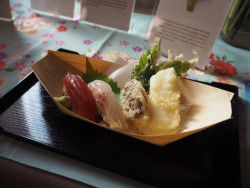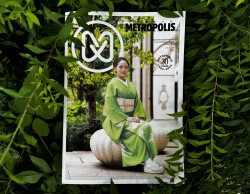
October 8, 2009
Geibikei and Hiraizumi
Temples and gorges jostle for attention in Iwate Prefecture
By Metropolis
Originally published on metropolis.co.jp on October 2009

Photos by Andrew Evans
In the mid-morning Iwate sun, our boatman tells jokes and answers questions in-between songs. Lounging over the edge of the funakudari, a traditional, flat-bottomed wooden vessel, we enjoy the sound of the water and lay back to admire the sheer, 100m cliffs of Geibikei Gorge.
Escorted by koi carp and serenaded by traditional—if at times unintelligible—crooning from the good-humored guide, the first half of the boat ride through the gorge lasts about 20 minutes. On alighting, you can stroll the riverbanks, examine the rocks up close, and even engage in stone skimming competitions with the locals. After that, it’s time to head back the way you came: from here, the river disappears into a mouth-like cave in the cliff.
No matter, though, as it means there’s another chance to feed the fish and enjoy the boatman’s watery warbles. Geibikei’s shallow waters are astoundingly clear, and brim with colorful fish that marshal themselves around the boat, waiting for some morsels. Large, brightly colored koi compete with smaller, faster nippers for the food thrown by passengers. Free from the sounds of traffic or trains, the trip back to the dock is leisurely; before you know it, it’s time to wake yourself up and disembark for dry land.

If you’re feeling a little lethargic after the boat ride, nearby Hiraizumi offers an enticing pick-me-up. This rural town is home to an array of temples and is sufficiently compact to be explored by bicycle. The best known attraction is Chuson-ji, a network of temple buildings located on top of a thickly forested hill. Of particular interest is Konjikido, a gold leaf-coated edifice to rival Kyoto’s Kinkakuji. Once open to the elements, the temple now sits inside a protective concrete enclosure. It’s still impressive, but the hefty ¥800 admission fee and prohibition on photography might leave those who have made the hike up the hill feeling a bit frustrated.
For a more unique attraction, get back on the bike and head a little out of town. While Chuson-ji might be Hiraizumi’s most famous site, it’s not its most interesting. That honor goes to Takkoku no Iwaya, which takes about 25 minutes by bicycle from Hiraizumi station. It’s a little inconvenient, maybe, but it more than merits the ride—as you’ll see as soon as you walk through the gate. The temple sits on wooden stilts and is carved into the face of a cliff, the color, design and size of the building matching the rock face perfectly.
Takkoku no Iwaya was first built in the 9th century (the current building dates from 1961) to celebrate the defeat of the local Emishi tribe by the emperor’s forces. The cave had previously been the headquarters of an Emishi chief, and was thus seen as a fitting place for a celebratory hall. Visitors are free to walk around the grounds and enter the temple itself, where they can see up close its construction and flush connection with the cliff. It grants a sense of privilege when you leave and makes a fantastic way to finish the day, just before the gentle ride back to the station.
While this part of Iwate is doable as a day trip, a weekend would probably be more relaxing. Ichinoseki is just over two hours from Tokyo on the Tohoku shinkansen, from which it is a 7min train ride to Hiraizumi, and half an hour to Geibikei. Accommodation is plentiful and reasonable in Ichinoseki; there are lots of cheap business hotels and a few ryokan and campgrounds. The Hiraizumi Tourism Association website (www.hiraizumi.or.jp/en) is very useful, as is the information center inside Ichinoseki station. Entrance for temples in Hiraizumi ranges from ¥300 (for Takkoku no Iwaya) to ¥800 (for Konjikido). Bicycles can be rented from Swallow Tours inside Hiraizumi station, costing ¥500 for two hours and ¥200 for every hour after that.
[geo_mashup_map]







